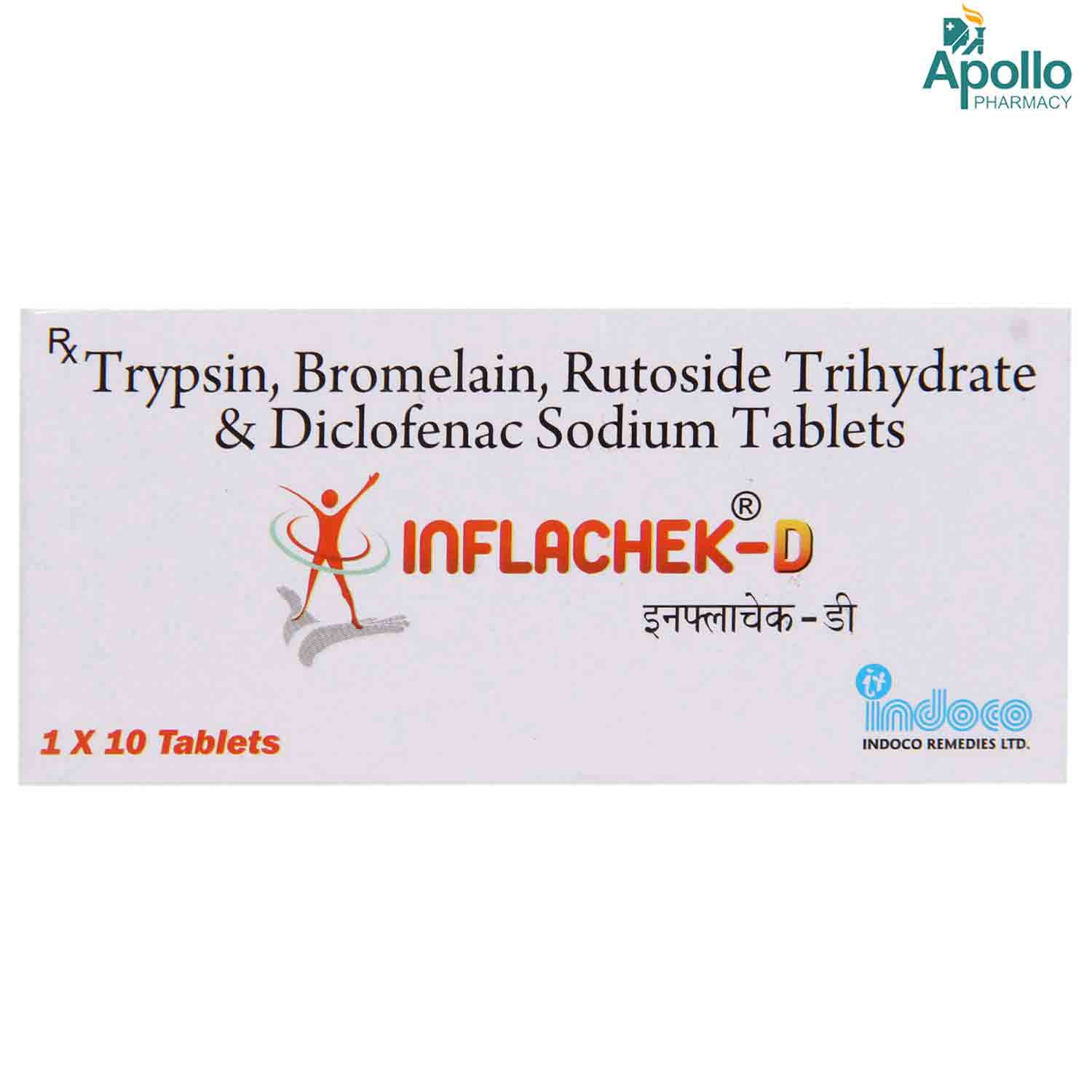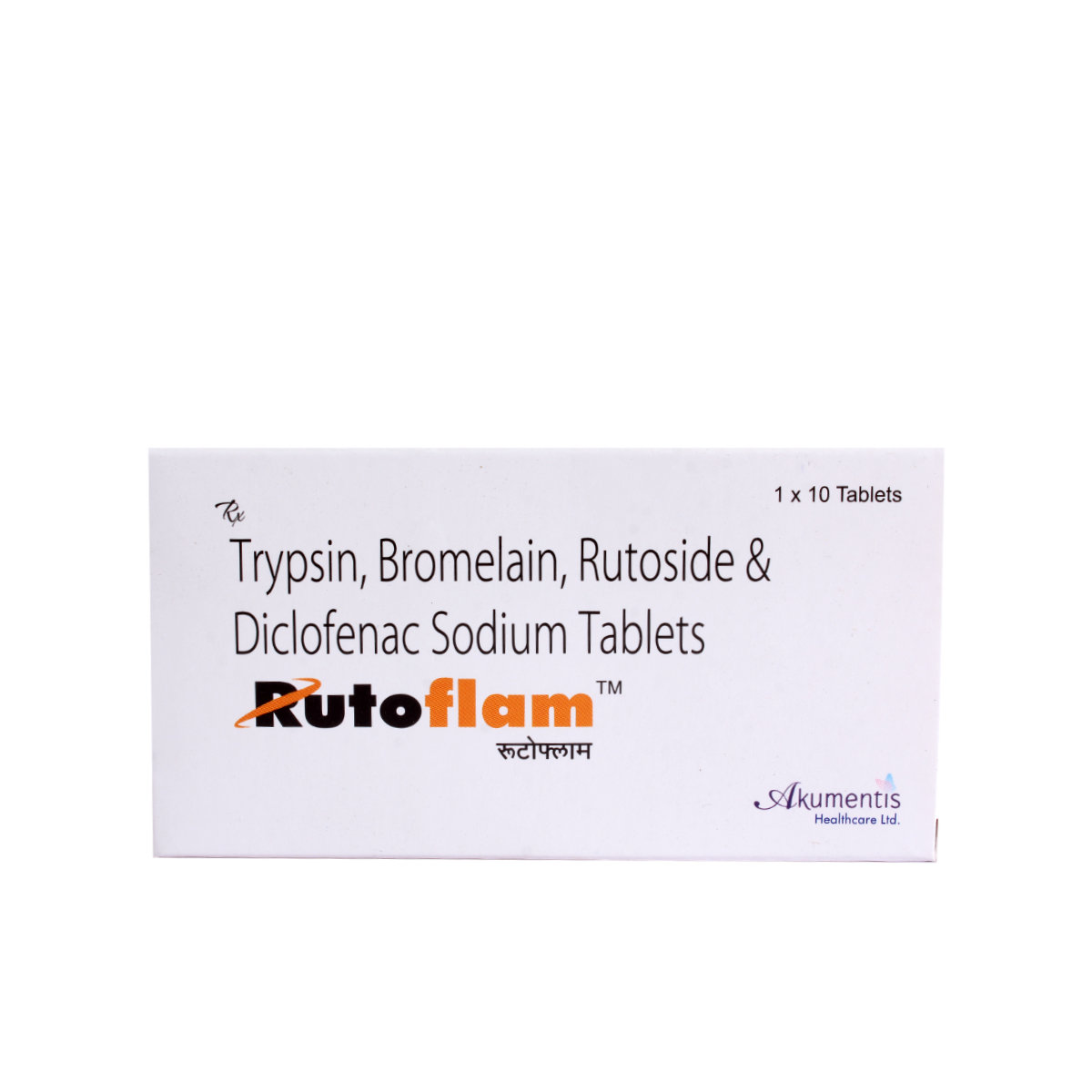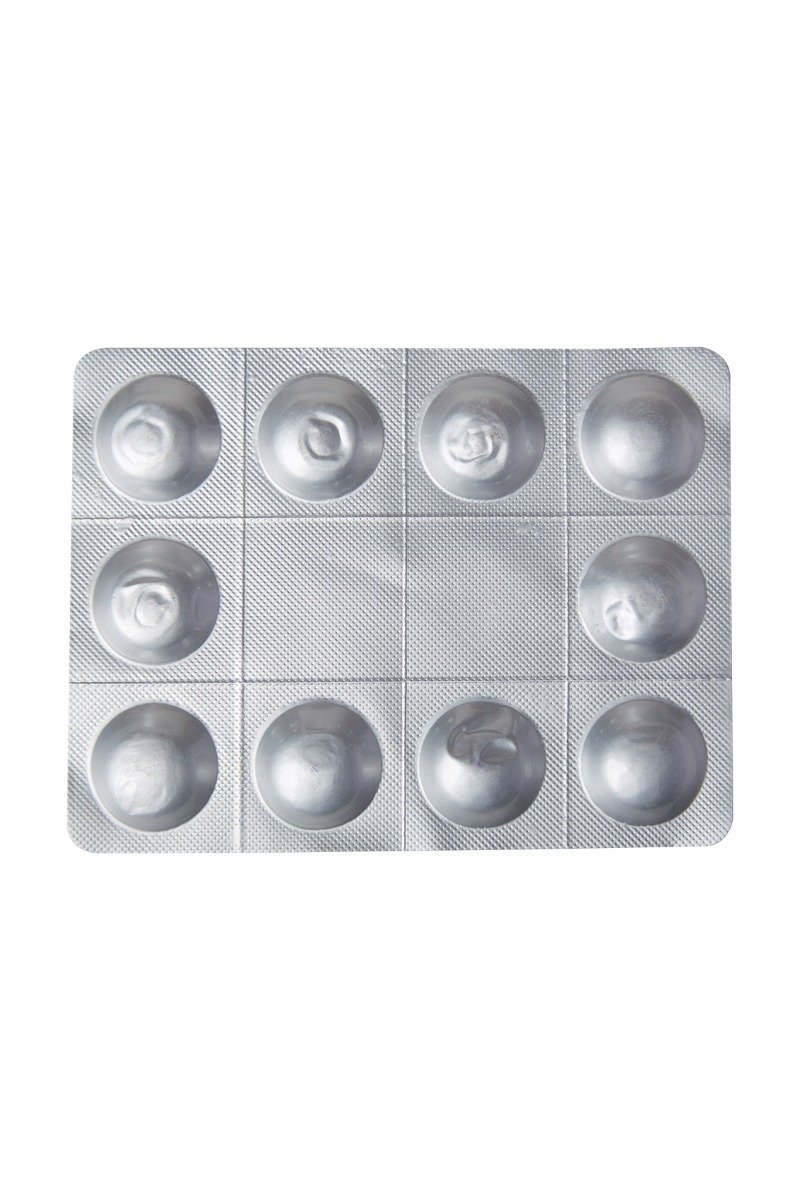Fudoshine Tablet 10'S
MRP ₹205
(Inclusive of all Taxes)
₹30.8 Cashback (15%)
Provide Delivery Location
Online payment accepted
 Prescription drug
Prescription drugWhats That
About Fudoshine Tablet
Fudoshine Tablet belongs to the class of medications called ‘analgesics’ used to treat pain associated with various conditions. It is used in the treatment of pain, swelling, and inflammation associated with chronic (long-term) conditions such as osteoarthritis (joint pain, especially in the knees, hip, hands, neck, and lower back) and rheumatoid arthritis (joint pain, especially in the hands and feet). It can also relieve acute (short-term) pain such as toothache, ear pain, throat pain, muscle ache, and backache.
Fudoshine Tablet is a combination medicine that contains Trypsin, Bromelains, Rutoside, and Diclofenac. Trypsin and Bromelain are enzymes and have antiseptic and anti-inflammatory properties. They reduce pain, swelling, and inflammation by increasing the blood supply to the affected area. It can also promote healing. Rutoside is an antioxidant and anti-inflammatory agent. It prevents further swelling and inflammation by neutralizing the chemicals (free radicals) that cause cell damage. Diclofenac is a non-steroidal anti-inflammatory agent (NSAID) that prevents the production of chemical substances (prostaglandins) that cause pain and inflammation.
Fudoshine Tablet is available in the form of a tablet. You should take this medication exactly as prescribed by your doctor. Fudoshine Tablet may cause side effects such as nausea, vomiting, stomach pain, indigestion, heartburn, stomach upset, diarrhoea, headache, flushing (skin reddening), and skin rash. These side effects are usually mild and temporary. However, if any of these side effects persist or worsen, consult a doctor immediately.
Do not take Fudoshine Tablet if you are allergic to NSAIDs or any other contents of it. Fudoshine Tablet should not be used in patients with a history of stomach ulcers, active stomach ulcers or bleeding, or stomach problems due to NSAIDs, heart, liver, kidney disease, and poor blood circulation. Fudoshine Tablet should be used with caution in patients with ulcerative colitis (inflammation of the large intestine), other bowel disorders, porphyria (an inherited blood disorder), bleeding disorders, asthma, other respiratory infections, hypertension (high blood pressure), history of blood clots, high cholesterol, diabetes, history of smoking, and systemic lupus erythematosus (a skin disease). Fudoshine Tablet should also be used with caution in pregnant and breastfeeding women. Fudoshine Tablet is not recommended for children below 12 years of age. Fudoshine Tablet may require dose adjustments when used in elderly people. Alcohol may increase the risk of liver damage and side effects, such as nausea, vomiting, and diarrhoea. Fudoshine Tablet may cause dizziness, so do not drive or operate heavy machinery if you are dizzy.
Uses of Fudoshine Tablet
Directions for Use
Key Benefits
Fudoshine Tablet contains Trypsin, Bromelains, Rutoside, and Diclofenac. Trypsin and Bromelain are enzymes and have antiseptic and anti-inflammatory properties. They reduce pain, swelling, and inflammation by increasing the blood supply to the affected area. It can also promote healing. Rutoside is an antioxidant and anti-inflammatory agent. It prevents further swelling and inflammation by neutralizing the chemicals (free radicals) that cause cell damage. Diclofenac is a non-steroidal anti-inflammatory agent (NSAID) that prevents the production of chemical substances (prostaglandins) that cause pain and inflammation. Fudoshine Tablet can be used to treat osteoarthritis, rheumatoid arthritis, toothache, ear pain, throat pain, and muscle pain. It can provide quick relief from the pain and promote faster healing of the affected tissue. It helps you to do your daily activities by decreasing the interference of pain and improving quality-of-life.
Storage
Drug Warnings
Fudoshine Tablet should be used with caution in patients with heart diseases as it may increase heart rate. Fudoshine Tablet may cause liver damage, so regular monitoring of liver function is required if this medicine is taken for longer durations. If you are scheduled for surgery of the stomach or intestine, inform your doctor that you are taking Fudoshine Tablet as this medicine may delay wound healing. Do not overdose on medicine, as Fudoshine Tablet in higher doses may increase heart attack or stroke risk.
Diet & Lifestyle Advise
- Do not go for heavy exercise as it may increase your joint pain in arthritis. Instead, you can do stretching, low impact aerobic exercises like walking on the treadmill, bike riding, and swimming. You can also strengthen your muscles by lifting light weights.
- In the chronic conditions of arthritis or joint pain, try to include fish like salmon, trout, tuna, and sardines. These fishes are enriched with omega-3 fatty acids that minimize levels of chemicals called cytokines, which ramp up inflammation.
- Your sitting posture is important, especially when you have pain and inflammation. Try to sit as little as possible, and only for a short duration of time. Long-term immobility is harmful in conditions like arthritis. Use back support like a rolled-up towel at the back of your spine curve to minimize pain. Keep your knees and hips at a right angle. Besides this, you can also use a footrest if required.
Side Effects of Fudoshine Tablet
- Nausea
- Vomiting
- Stomach pain
- Indigestion
- Heartburn
- Stomach upset
- Diarrhoea
- Headache
- Flushing (skin reddening)
- Skin rash
Habit Forming
Therapeutic Class
All Substitutes & Brand Comparisons
RX
ENZOFLAM SV TABLET
Alkem Laboratories Ltd
₹124.5
(₹11.21 per unit)
39% CHEAPERRX
Out of StockTRYBOSIDE D TABLET
Solace Pharmaceuticals
₹150
(₹13.5 per unit)
26% CHEAPERRX
Out of StockReeborn-D Tablet 10'S
Johnlee Pharmaceuticals Pvt Ltd
₹154.7
(₹13.92 per unit)
24% CHEAPER
FAQs
Drug-Drug Interactions Checker List
- ASPIRIN
- IBUPROFEN
- AMOXICILLIN
- WARFARIN
- LITHIUM
- METHOTREXATE
- CICLOSPORIN
- TACROLIMUS
- TRIMETHOPRIM
- MIFEPRISTONE
- DIGOXIN
- PHENYTOIN
- VORICONAZOLE
- COLESTIPOL
- CHOLESTYRAMINE
Special Advise
Fudoshine Tablet may increase the heart rate. Inform your doctor about any such symptoms.
Long-term use of Fudoshine Tablet may cause liver damage, your doctor may advise liver function for regular monitoring of liver function.
Disease/Condition Glossary
Pain: Pain is a symptom triggered by the nervous system, causing uncomfortable sensations in the body. It can be temporary (acute) or lifelong (chronic). Acute pain is, for a short time, caused by damage to the tissues of the muscle, bone, or organs. While chronic pain lasts lifelong and can occur due to severe inflammation or tissue damage, such as in cases of osteoarthritis and rheumatoid arthritis. Extreme tissue pain and inflammation caused due to sprains, strains, trauma, or post-surgery may require a prolonged amount of time to heal.
Osteoarthritis: It is a joint disease in which the two ends of the joints come together due to the breakdown of a protective covering of cartilage. Due to the absence of this protective covering, the joints rub against each other, leading to pain and stiffness. Symptoms include pain, stiffness, inflammation, and tenderness.
Rheumatoid arthritis: It is an auto-immune disease (the body's immune system attacks its tissue), leading to joint pain and damage. Symptoms of rheumatoid arthritis include pain, swelling, stiffness, deformities, and loss of joint function.

Have a query?
Alcohol
Safe if prescribed
Alcohol may cause further liver damage and worsen side effects of Fudoshine Tablet . So, limit the consumption of alcohol while using Fudoshine Tablet .
Pregnancy
Consult your doctor
Fudoshine Tablet may cause harmful effects on your foetus. Your doctor may prescribe this medicine if the benefits outweigh the risks.
Breast Feeding
Consult your doctor
It is unknown whether Fudoshine Tablet can be used in breastfeeding as there is no sufficient data on its safety. Hence, consult your doctor before taking this medicine if you are breastfeeding.
Driving
Safe if prescribed
Fudoshine Tablet may cause headaches and dizziness. So, you should not drive or operate heavy machinery if you feel dizzy after taking Fudoshine Tablet .
Liver
Consult your doctor
Fudoshine Tablet may alter liver function. So, it should be used with caution if you have liver problems. Your doctor may adjust the dose or prescribe a suitable alternative if necessary based on your condition.
Kidney
Consult your doctor
Fudoshine Tablet should be used with caution if you have kidney disease. Your doctor may adjust the dose or prescribe a suitable alternative if necessary based on your condition.
Children
Safe if prescribed
Fudoshine Tablet is not recommended for children below 12 years of age.











